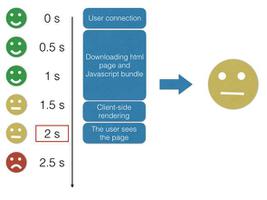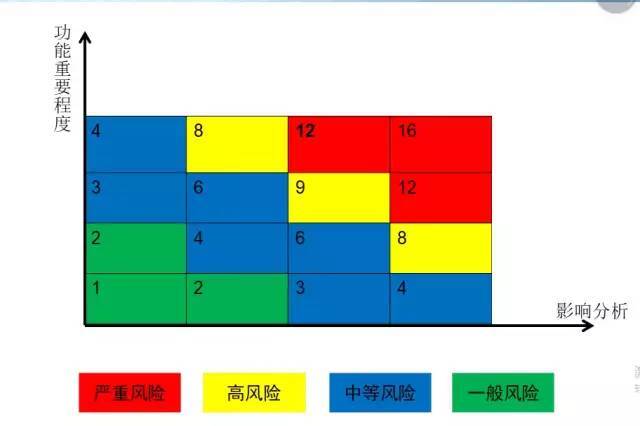MVC自定义路由中的多个级别
我正在尝试建立自己的小cms。我创建了一个抽象的pageBase类,该类由“静态”,“评论”,“文章”,“新闻”继承。每个都有自己的控制器方法。
我的问题是我需要允许管理员定义自己的自定义路径级别。例如news\local\mynewdog或Articles\events\conventions\mycon。所以我想要一种传递字符串数组并设置自定义路由的方法。
回答:
您可以使用自定义RouteBase子类无缝进行CMS样式的路由。
public class PageInfo{
// VirtualPath should not have a leading slash
// example: events/conventions/mycon
public string VirtualPath { get; set; }
public Guid Id { get; set; }
}
public class CustomPageRoute
: RouteBase
{
private object synclock = new object();
public override RouteData GetRouteData(HttpContextBase httpContext)
{
RouteData result = null;
// Trim the leading slash
var path = httpContext.Request.Path.Substring(1);
// Get the page that matches.
var page = GetPageList(httpContext)
.Where(x => x.VirtualPath.Equals(path))
.FirstOrDefault();
if (page != null)
{
result = new RouteData(this, new MvcRouteHandler());
// Optional - make query string values into route values.
this.AddQueryStringParametersToRouteData(result, httpContext);
// TODO: You might want to use the page object (from the database) to
// get both the controller and action, and possibly even an area.
// Alternatively, you could create a route for each table and hard-code
// this information.
result.Values["controller"] = "CustomPage";
result.Values["action"] = "Details";
// This will be the primary key of the database row.
// It might be an integer or a GUID.
result.Values["id"] = page.Id;
}
// IMPORTANT: Always return null if there is no match.
// This tells .NET routing to check the next route that is registered.
return result;
}
public override VirtualPathData GetVirtualPath(RequestContext requestContext, RouteValueDictionary values)
{
VirtualPathData result = null;
PageInfo page = null;
// Get all of the pages from the cache.
var pages = GetPageList(requestContext.HttpContext);
if (TryFindMatch(pages, values, out page))
{
if (!string.IsNullOrEmpty(page.VirtualPath))
{
result = new VirtualPathData(this, page.VirtualPath);
}
}
// IMPORTANT: Always return null if there is no match.
// This tells .NET routing to check the next route that is registered.
return result;
}
private bool TryFindMatch(IEnumerable<PageInfo> pages, RouteValueDictionary values, out PageInfo page)
{
page = null;
Guid id = Guid.Empty;
// This example uses a GUID for an id. If it cannot be parsed,
// we just skip it.
if (!Guid.TryParse(Convert.ToString(values["id"]), out id))
{
return false;
}
var controller = Convert.ToString(values["controller"]);
var action = Convert.ToString(values["action"]);
// The logic here should be the inverse of the logic in
// GetRouteData(). So, we match the same controller, action, and id.
// If we had additional route values there, we would take them all
// into consideration during this step.
if (action == "Details" && controller == "CustomPage")
{
page = pages
.Where(x => x.Id.Equals(id))
.FirstOrDefault();
if (page != null)
{
return true;
}
}
return false;
}
private void AddQueryStringParametersToRouteData(RouteData routeData, HttpContextBase httpContext)
{
var queryString = httpContext.Request.QueryString;
if (queryString.Keys.Count > 0)
{
foreach (var key in queryString.AllKeys)
{
routeData.Values[key] = queryString[key];
}
}
}
private IEnumerable<PageInfo> GetPageList(HttpContextBase httpContext)
{
string key = "__CustomPageList";
var pages = httpContext.Cache[key];
if (pages == null)
{
lock(synclock)
{
pages = httpContext.Cache[key];
if (pages == null)
{
// TODO: Retrieve the list of PageInfo objects from the database here.
pages = new List<PageInfo>()
{
new PageInfo()
{
Id = new Guid("cfea37e8-657a-43ff-b73c-5df191bad7c9"),
VirtualPath = "somecategory/somesubcategory/content1"
},
new PageInfo()
{
Id = new Guid("9a19078b-2d7e-4fc6-ae1d-3e76f8be46e5"),
VirtualPath = "somecategory/somesubcategory/content2"
},
new PageInfo()
{
Id = new Guid("31d4ea88-aff3-452d-b1c0-fa5e139dcce5"),
VirtualPath = "somecategory/somesubcategory/content3"
}
};
httpContext.Cache.Insert(
key: key,
value: pages,
dependencies: null,
absoluteExpiration: System.Web.Caching.Cache.NoAbsoluteExpiration,
slidingExpiration: TimeSpan.FromMinutes(15),
priority: System.Web.Caching.CacheItemPriority.NotRemovable,
onRemoveCallback: null);
}
}
}
return (IEnumerable<PageInfo>)pages;
}
}
您可以这样向MVC注册路由。
routes.IgnoreRoute("{resource}.axd/{*pathInfo}");// Case sensitive lowercase URLs are faster.
// If you want to use case insensitive URLs, you need to
// adjust the matching code in the `Equals` method of the CustomPageRoute.
routes.LowercaseUrls = true;
routes.Add(
name: "CustomPage",
item: new CustomPageRoute());
routes.MapRoute(
name: "Default",
url: "{controller}/{action}/{id}",
defaults: new { controller = "Home", action = "Index", id = UrlParameter.Optional }
);
上面假设您有CustomPageController一个Details带动作的方法。
public class CustomPageController : Controller{
public ActionResult Details(Guid id)
{
// Do something with id
return View();
}
}
如果希望路由转到其他控制器操作(甚至使它们成为构造函数参数),则可以更改路由。
以上是 MVC自定义路由中的多个级别 的全部内容, 来源链接: utcz.com/qa/402797.html







